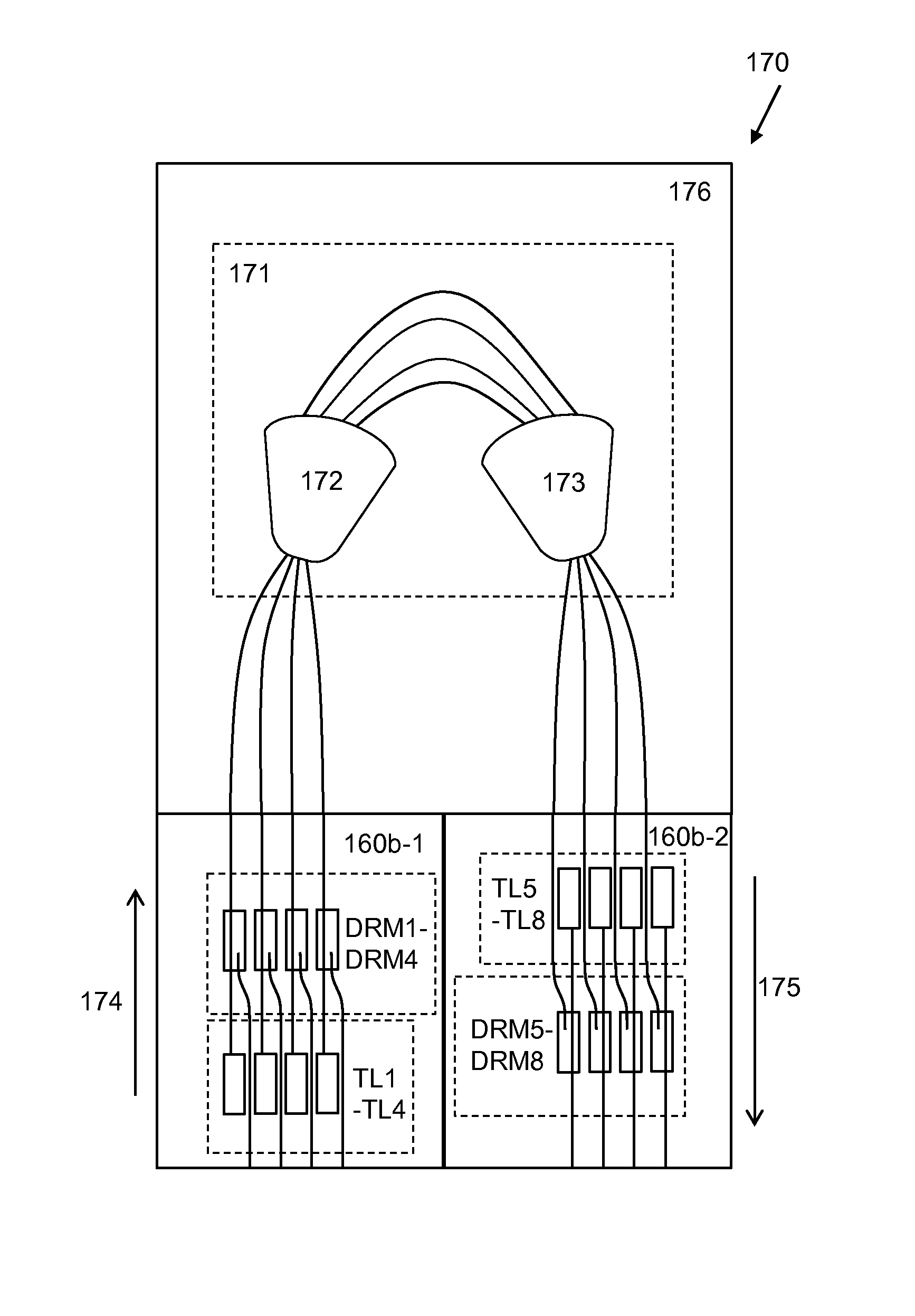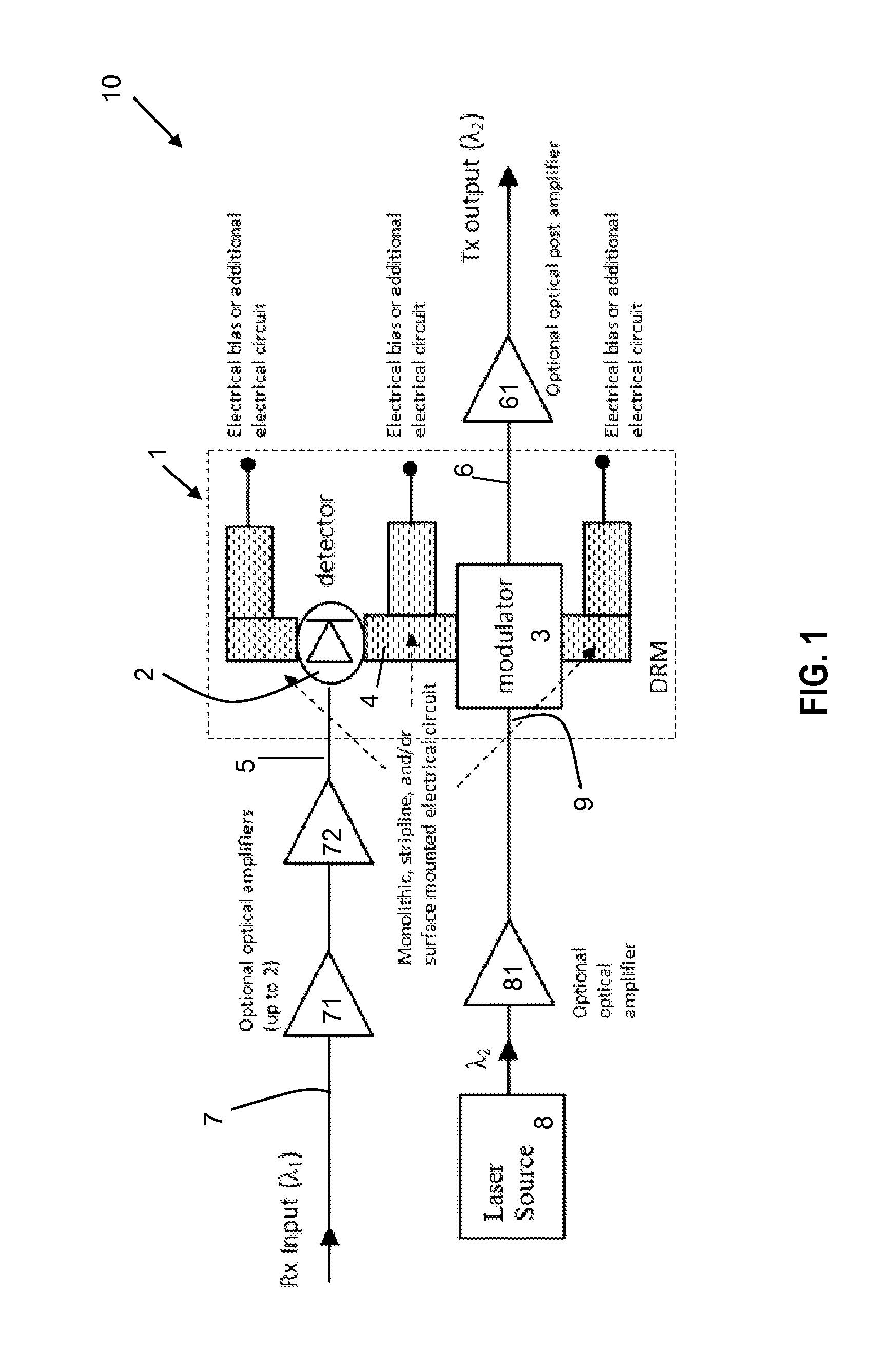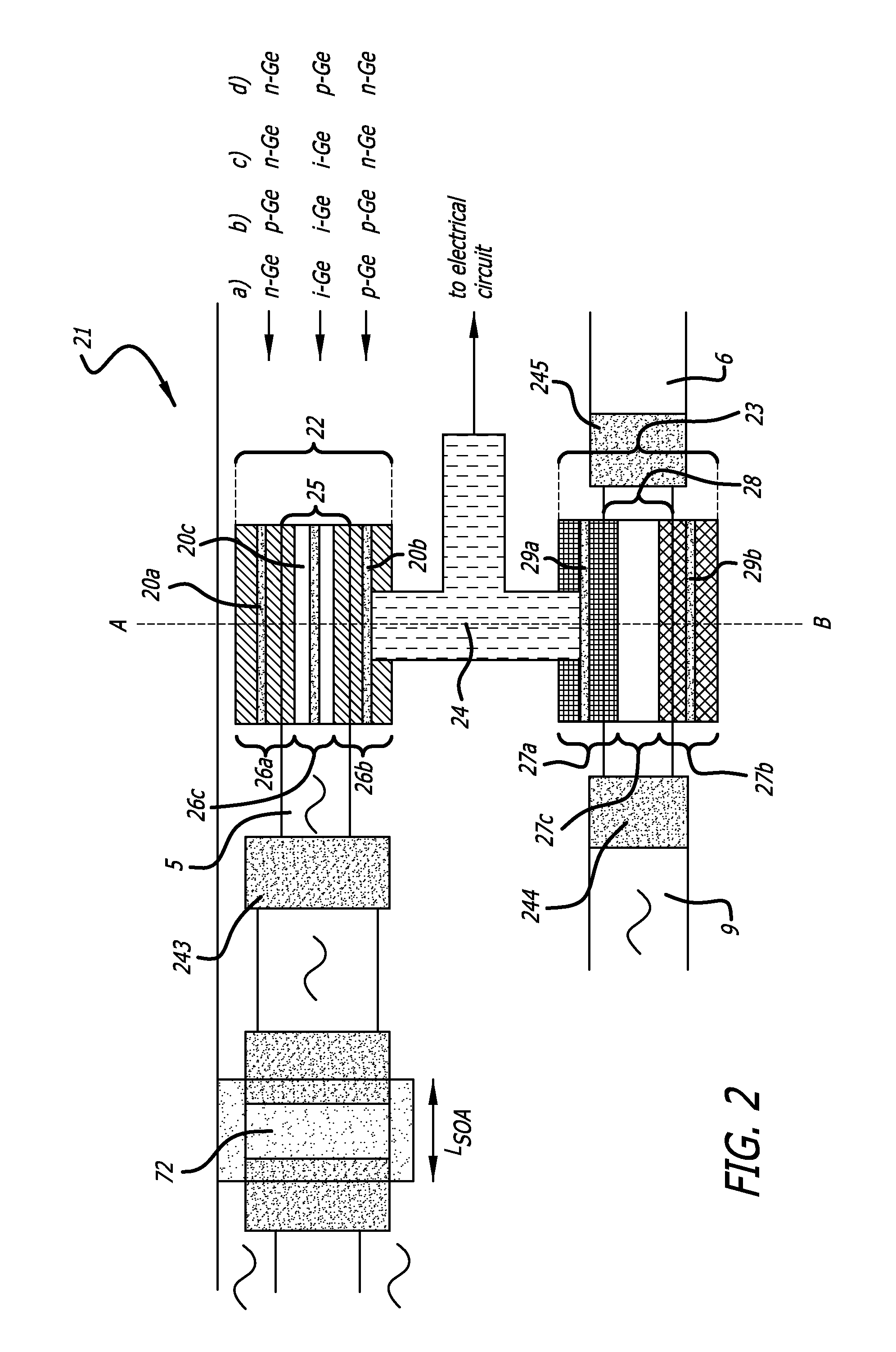Detector remodulator and optoelectronic switch
- Summary
- Abstract
- Description
- Claims
- Application Information
AI Technical Summary
Benefits of technology
Problems solved by technology
Method used
Image
Examples
Embodiment Construction
[0187]FIG. 1 shows a conversion chip 10 including a detector remodulator (DRM) 1. The detector remodulator 1 comprises a silicon on insulator (SOI) waveguide platform which includes: a detector 2, a modulator 3 and an electrical circuit 4 which electrically connects the detector to the modulator. The detector 2 is coupled to an input waveguide 5 and the modulator 3 is coupled to an output waveguide 6.
[0188]The detector 2, modulator 3, input waveguide 5 and output waveguide 6 are arranged within the same horizontal plane as one another within the SOI waveguide platform. In the embodiment shown, a portion of the electrical circuit is located directly between the detector and the modulator.
[0189]The conversion chip includes a waveguide for a (modulated) first optical signal 7 of a first wavelength λ1. In the embodiment shown in FIG. 1, the waveguide is coupled to the input waveguide 5 of the detector 2 via a first and second optical amplifier 71, 72, although in an alternative embodime...
PUM
 Login to View More
Login to View More Abstract
Description
Claims
Application Information
 Login to View More
Login to View More - R&D
- Intellectual Property
- Life Sciences
- Materials
- Tech Scout
- Unparalleled Data Quality
- Higher Quality Content
- 60% Fewer Hallucinations
Browse by: Latest US Patents, China's latest patents, Technical Efficacy Thesaurus, Application Domain, Technology Topic, Popular Technical Reports.
© 2025 PatSnap. All rights reserved.Legal|Privacy policy|Modern Slavery Act Transparency Statement|Sitemap|About US| Contact US: help@patsnap.com



